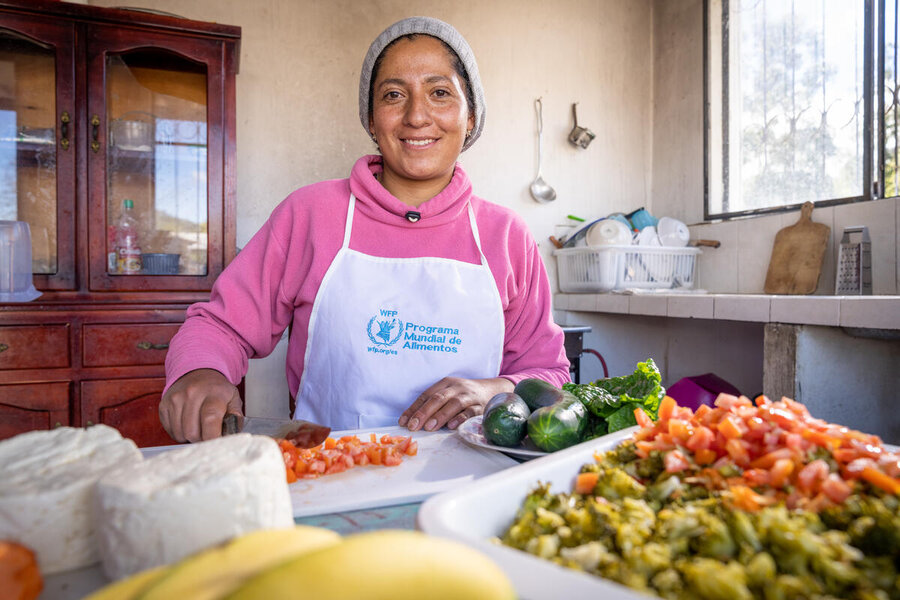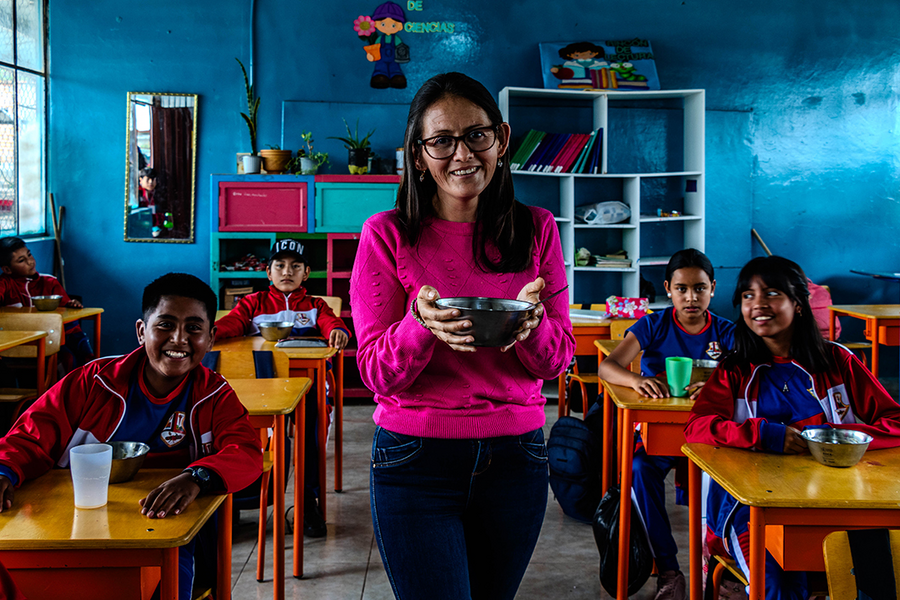
Martha Solano takes a two-hour journey to work every morning. Her bus makes its way along winding mountain roads. As it heads into the heart of rural San Rafael, in Ecuador's northeastern region of the province of Carchi, near the border with Colombia, there is plenty of time to reflect.
Solano is a teacher at Carlos Montúfar, a middle school supported by the World Food Programme (WFP), attended by 157 learners.
"Many of our students come to school hungry," says Solano, with evident passion and concern. "Their parents leave early for work and the children often go without food until they return, late in the evening."
In Ecuador, 21 percent of children aged 5 to 9, and 40 percent of those aged 10 to 14, arrive at school without having had a breakfast. In Carchi, chronic childhood malnutrition is at 23 percent.
WFP figures show 42 percent of students miss school due to illness or pain, often due to challenges in accessing nutritious foods, while only 50 percent of Ecuadorian families have access to nutritious foods. This is known to hinder learning and the all-round development of children as adults.

Last year, WFP, in coordination with the Government of Ecuador, launched a home-grown school meals programme to target rural areas with high levels of malnutrition and poverty.
The programme focuses on students in the early childhood and primary school stages of their schooling.
The home-grown element means schools in rural areas can buy fresh foods from local farmers. It allows children to eat nutritious meals cooked with ingredients procured locally, giving farmers a reliable source of income.
"In just two months, we've seen remarkable changes," says Solano of the initiative. "Children who were once regularly ill are now thriving, and their academic performance has improved."
This year, WFP aims to increase meal provision from 1,000 to 30,000 children across Ecuador's 17 provinces.
Traditional foods
Solano acknowledges that the project's success hinges on the collective efforts of community members such as teachers, parents, caregivers and local smallholder farmers - many of whose children she teaches.
"We've become a big family, all working together for the benefit of the children," she says.






